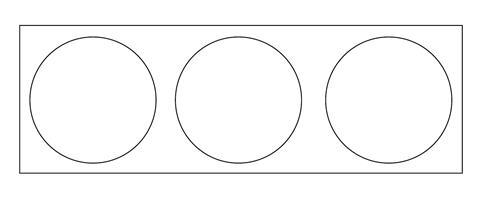Perform two chemical reactions to see whether any mass changes occur in this microscale class practical
In this experiment, students measure the mass of various reactant solutions before and after reaction to see whether there has been any change in mass.
The practical should take approximately ten minutes.
Equipment
Apparatus
- Eye protection
- Student worksheet
- Part of a well-plate (see note 3 below)
- Access to a balance that reads to 0.01 g
Chemicals
Note
Solutions should be contained in plastic pipettes. See the accompanying guidance on apparatus and techniques for microscale chemistry, which includes instructions for preparing a variety of solutions.
- Sodium carbonate, 0.5 mol dm–3
- Calcium nitrate, 0.5 mol dm–3
- Hydrochloric acid, 1 mol dm–3
- Magnesium ribbon
- Marble chips (small)
Health, safety and technical notes
- Read our standard health and safety guidance.
- Wear eye protection throughout.
- Cut a three-well plate from the standard 24-well plate using a hacksaw. A class set can be cut from a single well-plate (see diagram below).
- Sodium carbonate, Na2CO3.10H2O, 0.5 mol dm–3 is of low hazard at this concentration. See CLEAPSS Hazcard HC095A and CLEAPSS Recipe Book RB080.
- Calcium nitrate, Ca(NO3)2.4H2O, 0.5 mol dm–3 is of low hazard. See CLEAPSS Hazcard HC019B and CLEAPSS Recipe Book RB019.
- Hydrochloric acid, HCl(aq), 1 mol dm–3 is of low hazard. See CLEAPSS Hazcard HC047a and CLEAPSS Recipe Book RB043.

Procedure
Part 1: the reaction between sodium carbonate and calcium nitrate
- Put two plastic pipettes containing the solutions of sodium carbonate and calcium nitrate in the outer two wells of the mini well-plate.
- Place on a balance and record the mass.
- Put 20 drops of sodium carbonate solution into the middle well followed by 20 drops of calcium nitrate solution.
- Record any changes you see and write an equation for the reaction.
- Reweigh the complete apparatus and record the mass.
Question
Is there a difference in the masses before and after the reaction? Explain your answer.
Part 2: the reaction between marble and hydrochloric acid
- Place one piece of marble chip and the pipette containing the hydrochloric acid in two of the wells in the mini well-plate.
- Add ten drops of hydrochloric acid to the well containing the marble chip.
- Record any changes you see and write an equation for the reaction.
- When the reaction has finished reweigh the complete apparatus and record the mass.
Question
How do your answers compare with those in part 1? Explain your answers.
Teaching notes and expected observations
Students should find that there is a negligible difference in mass before and after mixing the sodium carbonate/calcium nitrate solution but there is some difference in mass in the magnesium or marble chip reaction with hydrochloric acid.
The success of this experiment depends on careful working by students and on the reliability of the balance and its proper use. Other combinations of substances could be examined and the experiment could be used as an investigation.
As an outcome of this experiment students should appreciate that matter is neither created nor destroyed in chemical reactions and that this is a very fundamental aspect of chemistry. It should also help them in balancing chemical equations!
Downloads
Mass changes in chemical reactions - student sheet
Editable handout | Word, Size 85.75 kbMass changes in chemical reactions - student sheet
Handout | PDF, Size 0.15 mbMass changes in chemical reactions - teacher notes
Editable handout | Word, Size 50.27 kbMass changes in chemical reactions - teacher notes
Handout | PDF, Size 0.13 mb
Additional information
This resource is part of our Microscale chemistry collection, which brings together smaller-scale experiments to engage your students and explore key chemical ideas. The resources originally appeared in the book Microscale chemistry: experiments in miniature, published by the Royal Society of Chemistry in 1998.
© Royal Society of Chemistry
Health and safety checked, 2018


















No comments yet